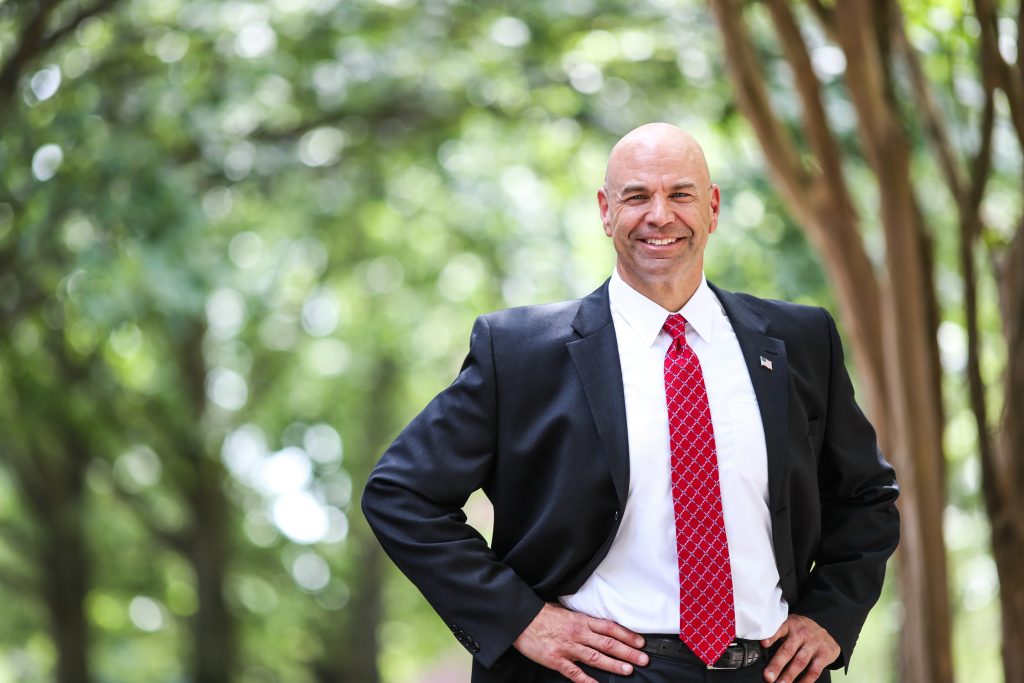When Ty J. Young started making cold calls at Bear Stearns in the 1990s, the job wasn’t about career growth — it was about survival. Five hundred calls a day, six days a week, pitching financial services to strangers. But while it wasn’t his passion, that grind laid the foundation for a business that now manages retirement strategies for more than 7,000 clients across the country.
Today, Young is the founder and CEO of Ty J. Young Wealth Management, a national firm built on a strategy that cuts against the grain of conventional Wall Street investing, focusing on long-term stability over high-risk growth. From his headquarters in Atlanta, the 58-year-old has grown the firm through nearly 40 acquisitions, a national media strategy, and a focus on principal protection.
“Making those cold calls gave me discipline, but watching market cycles up close taught me what to avoid,” Young said.
Shifting Away from Volatility
After working at Raymond James and J.C. Bradford & Co., Young started his own firm in 1998. While most advisors chased stock portfolios, active trading models, or in more recent years, speculative assets like cryptocurrency, Young focused on annuities. While annuities are often viewed as conservative or even outdated by many in the industry, Young saw something else.
“There was a clear gap in the market for retirement strategies that offered both growth potential and downside protection,” he said.
Rather than trying to beat the market, Young’s firm sought to remove market downside risk from the equation entirely for many clients. That made the firm’s message, and its risk tolerance, very different from larger asset managers chasing returns in volatile conditions.
Expansion Through Simplicity and Scale
Early growth came slowly. Young and his wife spent weekends refining educational seminars in their garage. Eventually, those sessions turned into a foundation for client acquisition. The firm expanded its reach through national TV campaigns and a string of small wealth management acquisitions.
“We didn’t have a big marketing budget, so everything had to be built for scale — seminars, team structure, media,” he said. “Once we had the formula, we just repeated it.”
Each acquisition brought more advisors under the company’s umbrella. Rather than rebranding or replacing systems wholesale, the firm integrated teams gradually, emphasizing continuity and compliance over flashy growth metrics.
High-Risk Hobbies, Low-Risk Finance
Outside of the office, Young spends time racing in the Trans Am Series and is also training to become a licensed pilot. The contrast between his high-speed hobbies and his cautious financial philosophy isn’t lost on him.
“I’ve crashed in warm-up laps and still managed to win,” he said. “But that only works if you’ve built a car and a team prepared for those moments.”
He sees parallels between wealth management and both racing and flying. They all require careful preparation, an understanding of systems, and the ability to navigate risk without being reckless.
“In both racing and finance, safety isn’t optional — it’s engineered into the system,” he said.
Still Focused on the Long Game
Young says his role today is more strategic than operational. He focuses on the firm’s long-term direction, public messaging, and expansion planning. He remains committed to a business model that avoids the speculative ups and downs that can define much of the financial services industry.
“There’s always pressure to chase trends, but our clients want predictability,” he said. “They’ve already taken the big risks by building businesses, raising families, and navigating markets. Now they want stability.”
Young remains bullish on the country’s long-term prospects, and by extension, the value of careful financial planning.
“The fundamentals of the American economy are still strong,” he said. “But securing financial well-being requires more than optimism — it takes structure.”
For Young, the formula hasn’t changed much since his days on the phone at Bear Stearns: make a plan, stick to it, and don’t take unnecessary chances.











